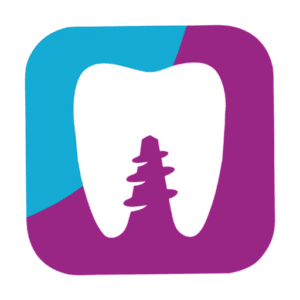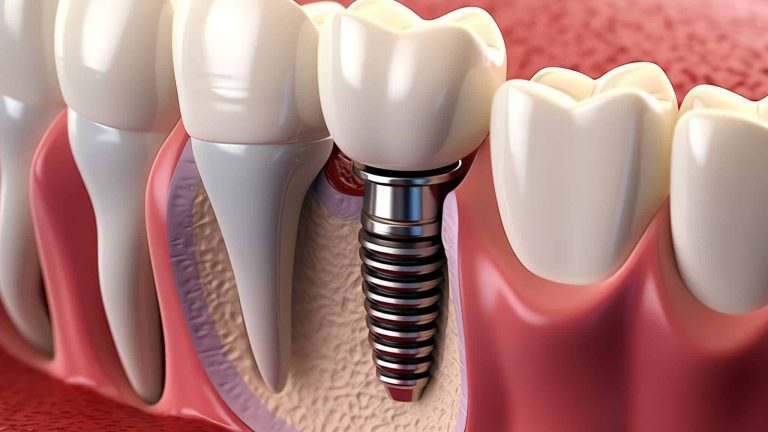Dental infections are common problems that, if not treated promptly, can lead to serious complications. Recognizing early symptoms and knowing when to seek professional help is crucial for preserving oral and overall health. In this article, we will explore what a dental infection is, its causes, symptoms, risks, and the importance of visiting a dentist on time.
What is a dental infection?

A dental infection occurs when bacteria invade dental or gum tissue, causing inflammation, pain, and, in severe cases, abscess formation. These infections usually originate in:
- The dental pulp: The soft tissue inside the tooth that contains nerves and blood vessels.
- The gums: For example, in cases of advanced periodontitis.
- The jawbone: When the infection spreads from a tooth or gum.
Common types of dental infections
- Dental abscess: A buildup of pus caused by a bacterial infection. It can be:
- Periapical: At the root of the tooth.
- Periodontal: In the gums.
- Gingivitis and periodontitis: Gum diseases that can lead to infections.
- Dental cellulitis: A more severe infection that spreads to surrounding soft tissues.
Main causes of a dental infection
Dental infections are generally the result of poor oral hygiene, but they can also be caused by other factors. The most common causes include:
1. Untreated cavities
Advanced cavities can reach the dental pulp, allowing bacteria to infect the tooth’s internal tissue.
2. Dental trauma
Fractures or cracks in teeth can expose the dental pulp, facilitating bacterial entry.
3. Gum diseases
The buildup of plaque and tartar can cause gingivitis, which, if untreated, can progress to periodontitis and lead to more severe infections.
4. Previous dental procedures
A poorly performed root canal or lack of hygiene after a procedure can be an entry point for bacteria.
5. Weakened immune system
People with diabetes, autoimmune diseases, or undergoing treatments like chemotherapy are more prone to infections.
Symptoms of a dental infection
Identifying the symptoms of a dental infection is key to avoiding complications. Some of the most common signs include:
1. Persistent or throbbing pain
Severe and constant dental pain, which may radiate to the ear, jaw, or neck, is one of the first indicators of an infection.
2. Swelling
Swelling in the face, gums, or jaw is a sign that the infection is spreading.
3. Sensitivity to cold or heat
If a tooth reacts excessively to cold/hot foods or drinks, it may be a symptom of infection.
4. Persistent bad breath
Bad odor that does not go away with brushing can be caused by bacteria associated with an infection.
5. Fever
Fever is a sign that the body is fighting an infection.
6. Swollen lymph nodes
Swelling of the lymph nodes in the neck or jaw indicates that the body is reacting to an infection in the area.
7. Appearance of an abscess
A dental abscess appears as a pus-filled bump on the gums. It can cause an unpleasant taste in the mouth if it ruptures.
Risks of not treating a dental infection
Ignoring a dental infection can have serious consequences, not only for oral health but also for overall health. Some risks include:
1. Spread of infection
Bacteria can spread to other parts of the body, causing problems like facial cellulitis, sinus infections, or even sepsis.
2. Tooth loss
If the infection destroys too much bone or dental tissue, the affected tooth may need to be extracted.
3. Systemic complications
Dental infections can contribute to heart problems, pregnancy complications, and worsening of chronic diseases like diabetes.
4. Osteomyelitis
A severe infection in the jawbone that requires specialized treatment.
When to seek professional help?
It is essential to seek dental care at the first signs of a possible infection. The following scenarios require immediate attention:
- Severe and persistent pain that does not improve with painkillers.
- Significant swelling in the face, neck, or jaw.
- High fever accompanied by oral symptoms.
- Difficulty swallowing or breathing, which could indicate a life-threatening infection.
- Presence of a visible abscess or pus drainage.
Diagnosis and treatment of dental infections
Diagnosis
A dentist will assess the situation through:
- Physical examination of the teeth and gums.
- X-rays to identify the extent of the infection.
- Sensitivity tests to determine if the pulp is affected.
Treatment
Treatment will depend on the severity of the infection and may include:
- Antibiotics Prescribed to combat bacterial infection. However, they do not replace necessary dental treatment.
- Abscess drainage If there is pus accumulation, the dentist may perform drainage to relieve pressure and eliminate the infection.
- Root canal treatment If the infection affects the dental pulp, a root canal is performed to clean and seal the tooth.
- Tooth extraction In severe cases, the infected tooth may need to be removed to prevent the infection from spreading.
- Periodontal surgery If the infection affects the gums, a surgical procedure may be necessary to remove the infected tissue.
Prevention of dental infections
The best way to avoid a dental infection is to maintain good oral health. Here are some key tips:
1. Daily oral hygiene
Brush your teeth at least twice a day with fluoride toothpaste and use dental floss to remove plaque.
2. Regular dental visits
Visit the dentist at least twice a year for cleanings and check-ups.
3. Balanced diet
Limit the consumption of sugars and processed foods, which promote cavities.
4. Dental protection
Use mouthguards if you play contact sports to prevent trauma.
5. Early treatment of dental problems
Address cavities, gingivitis, or other issues promptly to avoid complications.
Conclusion
Recognizing the signs of a dental infection and seeking professional help on time is essential to protect your oral and overall health. If you experience pain, swelling, or any other mentioned symptoms, do not ignore them. At Clínicas La Guardia, we have a team of experts and advanced technology to effectively diagnose and treat dental infections.




